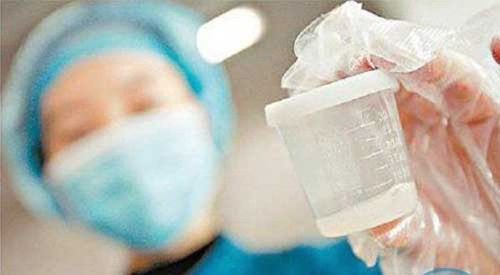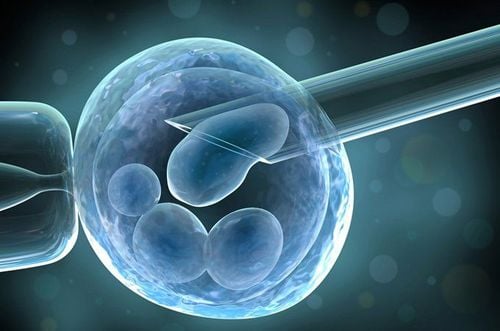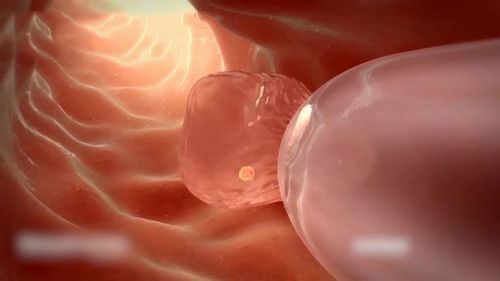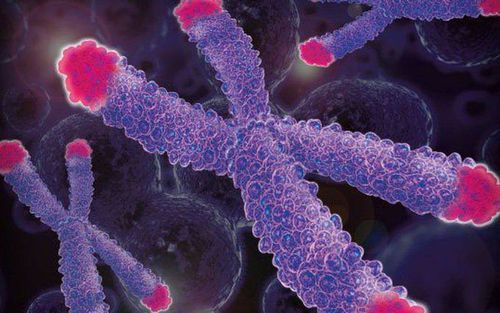This is an automatically translated article.
This article is professionally consulted by Master, Doctor Nguyen Thi Cam Van - IVF Lab Doctor - Reproductive Support Center - Vinmec Times City International Hospital. The doctor has experience and strength in performing specialized techniques of assisted reproduction in the IVF lab.An embryo is formed at 5 weeks (from the time of fertilization) and develops for 6 weeks before being called a fetus. This is a very important stage, forming the basic shape of a baby, organs in the body.
1. The period from ovulation to embryo formation
Ovulation During the natural cycle, an egg is released from a woman's ovaries each month into the fallopian tubes. Ovulation occurs about 2 weeks after the first day of your period.Eggs move into the fallopian tubes After the egg is released from the ovary, it moves into the fallopian tube. And wait there for the sperm to fertilize.
Journey of sperm after intercourse The number of sperm in one ejaculation can be up to 150 million sperm. After ejaculation, sperm swim upstream towards the fallopian tube to complete the task of fertilization. Sperm swimming fast can reach the egg in half an hour, if it swims slower it can take several days. Sperm can live in a woman's body for 48-72 hours. Only a few hundred sperm can reach the egg because it is unable to overcome the natural barriers in the woman's body.
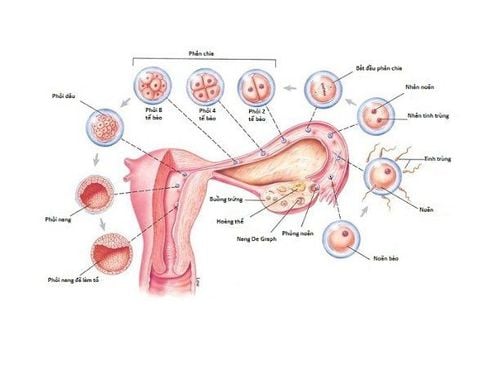
Cells begin to divide The fertilized egg begins to grow rapidly, dividing into many cells. It leaves the fallopian tubes and enters the uterus 3-4 days after fertilization. In rare cases, a fertilized egg implants in a fallopian tube. This phenomenon is called an ectopic pregnancy. A ruptured ectopic pregnancy is an emergency in obstetrics and gynecology because of the risk to the mother's life.
Implantation in the uterus After traveling to the uterus, the fertilized egg attaches to the lining of the uterus (endometrium). This process is called nesting. After nesting, the cells continue to divide.
Hormonal changes during pregnancy Within 1 week of conception, a hormone called human chorionic gonadotropin (hCG) can be found in a woman's blood. This hormone is made from the cells that will become the placenta. The hCG hormone can be detected in a blood or urine pregnancy test. But it usually takes 2-3 weeks for hCG levels to be high enough for an accurate home pregnancy test.
Fetal development The fertilized egg after attaching to the uterus, some cells develop into the placenta, others develop into an embryo. The fetal heart begins to beat from the 5th week. The brain, spinal cord, heart and other organs begin to form. At 8 weeks, the embryo continues to develop and is called a fetus, which is about 1.5 cm long. The fetus is developed to maturity in about 40 weeks.
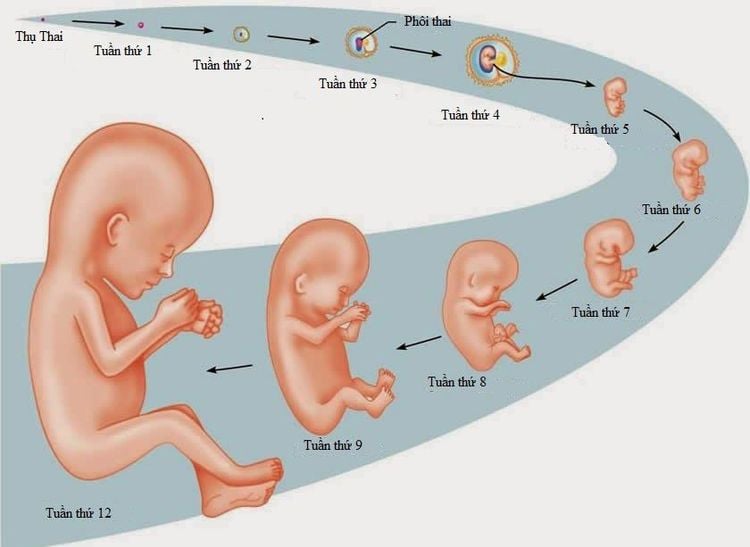
2. Embryonic Development Stages
From the time of fertilization to the formation of a blastocyst that attaches and develops in the uterine wall, the embryo begins to form and develop. The embryo develops from the 5th to the 10th week (calculated from the time of fertilization). The stages of development are described as follows:5th week embryo (3 weeks after conception) This is the stage where the embryo and other organs (brain, heart, spinal cord) are formed. The embryo is made up of 3 layers of cells:
Embryonic ectoderm: Embryonic ectoderm cells will develop into skin organs, central and peripheral nervous system, eyes, inner ear, and connective tissues. Embryonic mesoderm: Embryonic mesoderm cells will develop into the bones, muscles, kidneys, and reproductive system of the fetus. Embryonic endoderm: Embryonic endoderm cells will develop into the mucosal membranes lining the body tubes, lungs, intestines, and bladder.
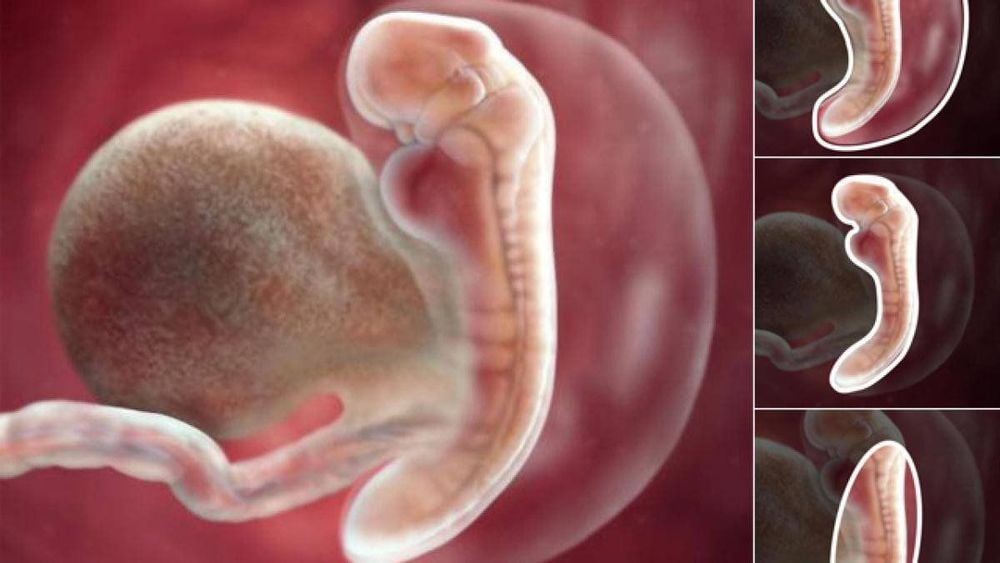
7th week embryo (5 weeks after conception) Noses and vitreous are formed, upper and lower limb sprouts grow longer.
8th week embryo (6 weeks after conception) Limbs grow longer, fingers begin to form. The 2 outer ears are shaped, the baby's eyes begin to see. Upper lip and outer nose are formed. The embryo's body begins to straighten.
9th week embryo (7 weeks after conception) The arm bones grow long, the elbow area is formed. Toes begin to form, eyelids, 2 ears continue to perfect.
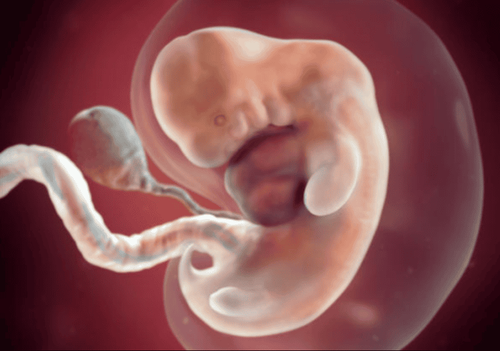

Customers can come to the Center for Reproductive Support - Vinmec International General Hospital. This is the leading center in Vietnam, which has developed and applied a comprehensive medical examination and treatment process, combining both gynecology and obstetrics and gynecology to provide the optimal method for each patient's case.
Advantages when customers choose Vinmec fertility center:
Equipped with modern equipment, clean air system according to international standards to ensure lab quality, single cabinet system to optimize quality embryo, improving the success rate for each cycle of artificial insemination. Implement most advanced assisted reproductive techniques in the world: ICSI (injection of sperm into the oocyte cytoplasm); support embryo escape membrane; Reproductive reserve: embryo freezing, sperm freezing, oocyte freezing to help customers take the initiative in giving birth at will, transferring embryos on day 5, minimizing pregnancy; male infertility techniques (PESA, MESA, TEFNA, TESE) Besides advanced reproductive support methods, a team of excellent doctors in the country and the world, with prestige and long-term experience in the field of infertility .
Please dial HOTLINE for more information or register for an appointment HERE. Download MyVinmec app to make appointments faster and to manage your bookings easily.
References: webmd.com, little-einsteins.com






